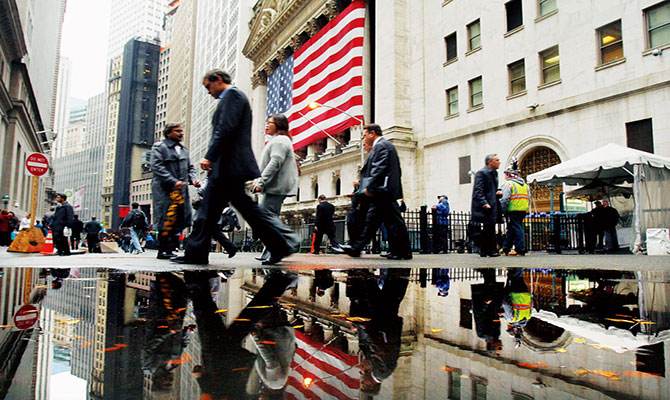
In the recent spotlight of the global economic stage, every move of the US economy has affected the nerves of the global market. With inflation data continuing to fall and the strong rebound of the US stock market index, the market on the "US economy will have a soft landing" optimistic argument once again. However, in-depth analysis of the logic and practical challenges behind this series of data, it is not difficult to find that the US economy to achieve this idealized "soft landing" is far more difficult than the optimistic picture presented on the surface.
First, let's focus on the seemingly encouraging set of inflation data. The Labor Department's consumer price index, which rose 2.9 percent in July from a year earlier, edged down slightly from June, did offer a glimmer of relief. But on closer inspection, the figure remains well above the Fed's long-held 2 per cent inflation target, suggesting that inflationary pressures have not fundamentally eased. Further complicating matters is the continued rise in the prices of rents and services, which indicates that inflation is both stubborn and structural, and cannot be easily resolved overnight. Federal Reserve Chairman Powell's repeated warnings are a reflection of this deep insight into the current situation.
Turning to the Labour market, the picture is similarly bleak. The number of new non-farm payrolls in July was well below market expectations, and the rising unemployment rate, combined with the general weakness of workers' willingness to work after the pandemic, has hindered the recovery of the Labour market. Employment is a barometer of the economy, and its weakness not only reflects the lack of economic growth momentum, but also indicates that future consumption potential may be limited. The frequent revision of employment data has intensified the market's doubts about its authenticity and reliability, further weakening market confidence.
At the global level, the uncertainty of the trade environment, the intensification of geopolitical risks, and the general background of slowing global economic growth have all put pressure on the US economy. These external factors are like an undercurrent that threatens the stability of the U.S. economy. Internally, the pressure of economic structural transformation cannot be ignored. From Disney to Airbnb to McDonald's, these industry giants have revealed fragile consumer confidence and declining spending power, even high-end consumer groups are difficult to escape. The contraction of manufacturing activity and the downturn in non-manufacturing PMI new order data directly reflect the grim reality of the overall contraction of economic activity.
As one of the core institutions of global economic regulation, the Fed's decisions are crucial to the direction of the U.S. economy. However, in recent years, the Fed's performance in policy regulation is hardly stable. From the frequent swings in interest rate cut expectations to the abandonment of forward guidance in favor of data decisions, this series of changes has not only undermined market trust in the continuity and effectiveness of its policies, but also led to swings in market sentiment. In the sea of data volatility, the Fed seems to have lost its precise control of the course, and the market has subsequently fallen into a vicious circle of "high sentiment - despair - high sentiment".
In summary, the argument that the US economy is heading for a soft landing is more like an illusory bubble wrapped in data. The persistence of inflationary pressures, the weakness of the labor market, the complexity of the global economic environment, and the difficulties of the Federal Reserve's policy control, together constitute the four barriers to a soft landing of the US economy.
First, the complexity and structural nature of the inflation problem make it impossible to solve it quickly through simple monetary policy adjustments. The rise in rent and service prices has highlighted the deep-seated contradiction behind inflation, which requires a more comprehensive and systematic policy response.
Second, the weak recovery of the labor market not only affects the current economic growth momentum, but also poses a constraint on future consumption potential. If the job market does not improve significantly, consumption, an important engine of economic growth, will not be able to play its full role.
Moreover, the complexity and uncertainty of the global economic environment require that the US economy must be more resilient and adaptable. However, judging from the current situation, it is clear that the US economy still has many shortcomings in this regard.
Finally, the Federal Reserve's difficulties in policy regulation have further exacerbated market uncertainty and volatility. In a data-driven decision-making mode, the Fed seems to be more susceptible to short-term data fluctuations, making it difficult to formulate long-term, stable and effective policy programs.
Therefore, for the optimistic expectation that the US economy will usher in a soft landing, we should keep enough vigilance and rationality. On the basis of fully recognizing the challenges and difficulties facing the current economy, we should pay more attention to how to promote the sustained, stable and healthy development of the US economy through policy innovation, structural reform and international cooperation. After all, in a complex and changing global economic environment, the future can only be won by constant adaptation and change.

Recently, HP announced that it expects to cut 4,000 to 6,000 jobs worldwide by fiscal year 2028 as part of a plan to simplify operations and use artificial intelligence to accelerate product development, improve customer satisfaction, and enhance productivity.
Recently, HP announced that it expects to cut 4,000 to 6,00…
Recently, according to people Media, McDonald's announced t…
In the Geneva negotiation hall that day, by the time coffee…
On the evening of November 25th local time, the three major…
Amidst the intensifying global geopolitical conflicts and t…
As ESG concepts evolve and regulatory scrutiny intensifies,…